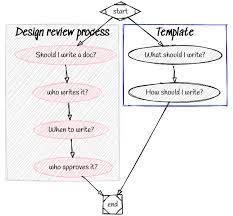Unlocking the Potential: The Journey of a Backend Software Engineer
The Role of a Backend Software Engineer
Backend software engineers play a crucial role in the development of web applications and software systems. While frontend developers focus on the user interface and client-side interactions, backend engineers work behind the scenes to ensure that the application runs smoothly and efficiently.
Responsibilities of a Backend Software Engineer
Backend engineers are responsible for designing, implementing, and maintaining the server-side logic of an application. This includes:
- Developing scalable and secure APIs
- Optimizing database queries for performance
- Integrating third-party services and external APIs
- Implementing authentication and authorization mechanisms
- Monitoring system performance and troubleshooting issues
Skills Required
To excel as a backend software engineer, one needs a strong foundation in programming languages such as Java, Python, Ruby, or Node.js. Additionally, knowledge of databases (SQL or NoSQL), web servers, and cloud services is essential.
Problem-solving skills, attention to detail, and the ability to work collaboratively with frontend developers, designers, and other team members are also important for success in this role.
Career Outlook
The demand for backend software engineers continues to grow as more businesses rely on digital solutions to streamline their operations. With experience and expertise in backend development, professionals in this field can pursue various career paths, including becoming technical leads, architects, or even starting their own tech companies.
In conclusion, backend software engineers play a vital role in building robust and efficient web applications. Their expertise ensures that the systems function seamlessly while providing a secure and reliable user experience.
6 Essential Tips for Excelling as a Backend Software Engineer
- Understand the fundamentals of computer science and software engineering
- Master at least one programming language commonly used in backend development, such as Java, Python, or Node.js
- Learn about databases and how to design efficient data storage solutions
- Practice writing clean and maintainable code to ensure scalability and ease of maintenance
- Familiarize yourself with various backend frameworks and tools like Spring Boot, Django, or Express.js
- Stay updated on industry trends and best practices to continuously improve your skills
Understand the fundamentals of computer science and software engineering
To excel as a backend software engineer, it is crucial to have a deep understanding of the fundamentals of computer science and software engineering. Proficiency in areas such as data structures, algorithms, and software design principles lays a strong foundation for developing efficient and scalable backend systems. By mastering these core concepts, backend engineers can tackle complex problems with confidence, optimize performance, and create robust solutions that meet the needs of modern web applications.
Master at least one programming language commonly used in backend development, such as Java, Python, or Node.js
To excel as a backend software engineer, it is essential to master at least one programming language commonly used in backend development, such as Java, Python, or Node.js. Proficiency in a specific language allows engineers to effectively design and implement server-side logic, develop scalable APIs, optimize database queries, and integrate various services seamlessly. By mastering a backend programming language, engineers can streamline development processes, enhance system performance, and contribute significantly to the success of web applications and software systems.
Learn about databases and how to design efficient data storage solutions
Understanding databases and mastering the art of designing efficient data storage solutions are essential skills for any backend software engineer. A solid grasp of database concepts, such as normalization, indexing, and query optimization, enables engineers to create scalable and performant applications. By learning how to structure data effectively and choose the right database technologies for different use cases, backend engineers can ensure that their applications are not only reliable but also capable of handling large volumes of data efficiently.
Practice writing clean and maintainable code to ensure scalability and ease of maintenance
Practicing the habit of writing clean and maintainable code is essential for backend software engineers to ensure scalability and ease of maintenance in their projects. By adhering to coding best practices, such as proper documentation, modularization, and following design patterns, engineers can create code that is easier to understand, debug, and enhance over time. Clean code not only improves the overall quality of the software but also simplifies collaboration with team members and reduces the risk of introducing bugs during updates or modifications. Investing time in writing clean code upfront pays off in the long run by making it easier to scale the application and maintain it efficiently throughout its lifecycle.
Familiarize yourself with various backend frameworks and tools like Spring Boot, Django, or Express.js
To excel as a backend software engineer, it is crucial to familiarize yourself with various backend frameworks and tools such as Spring Boot, Django, or Express.js. These frameworks offer pre-built modules and functionalities that can significantly speed up the development process and help you build robust, scalable applications. By mastering these tools, you can enhance your efficiency, stay updated with industry trends, and create high-quality backend solutions that meet the demands of modern web development.
Stay updated on industry trends and best practices to continuously improve your skills
It is essential for backend software engineers to stay updated on industry trends and best practices to continuously enhance their skills. By keeping abreast of the latest developments in technology, tools, and methodologies, engineers can adapt to changing requirements and deliver more efficient and innovative solutions. Continuous learning and improvement not only benefit the individual engineer but also contribute to the overall success of the projects they work on.






